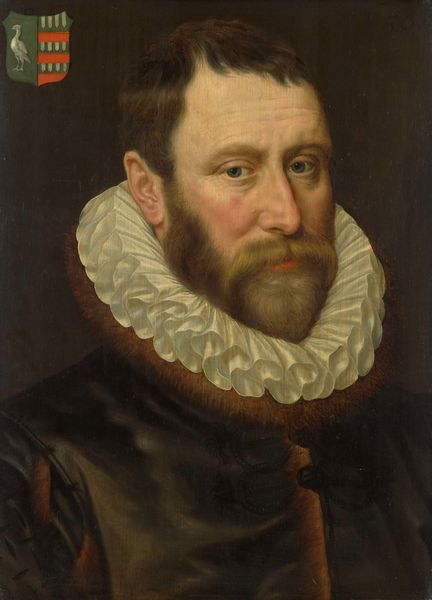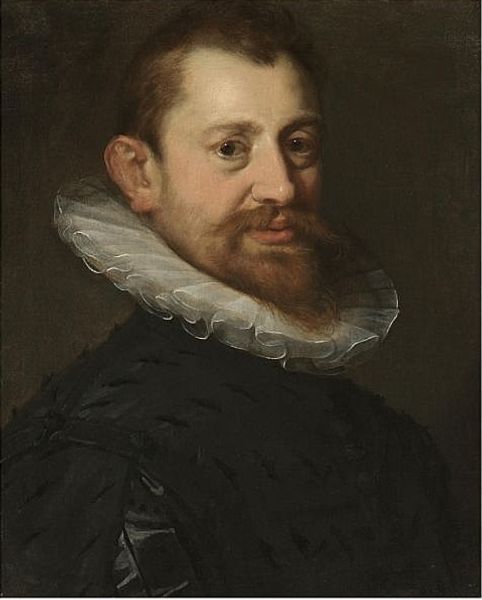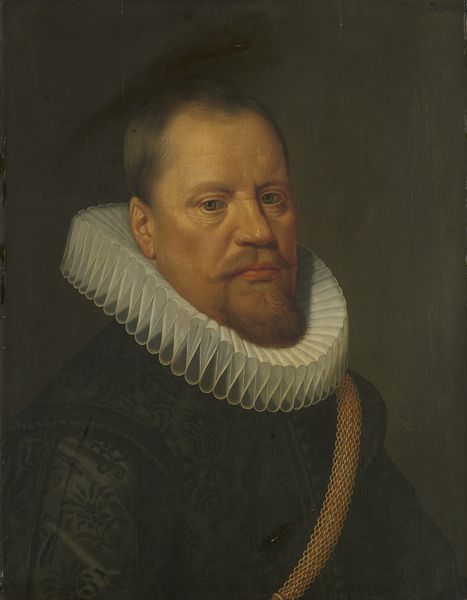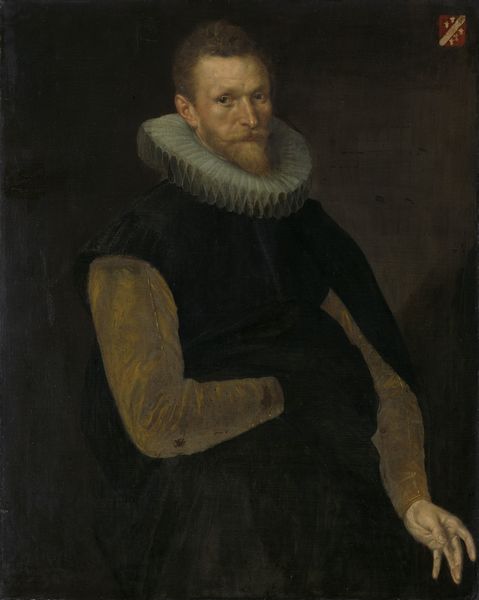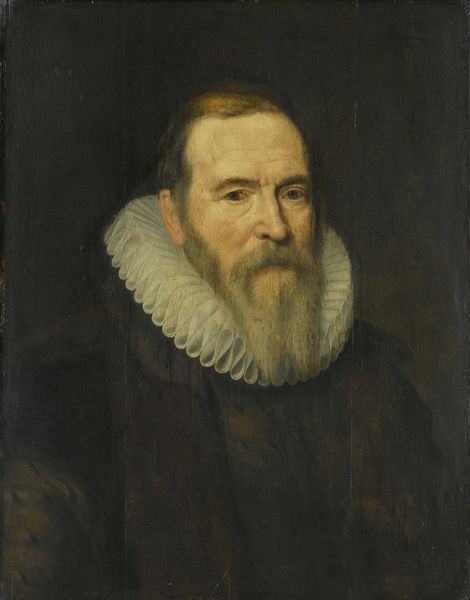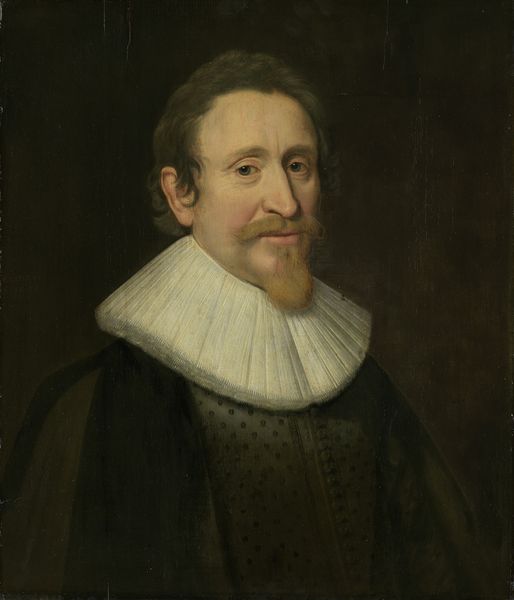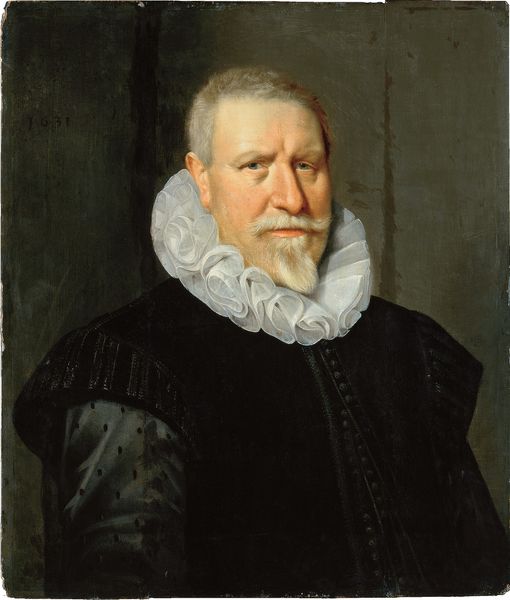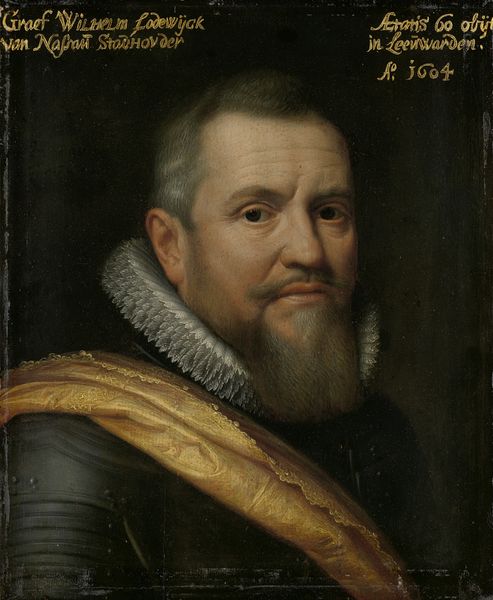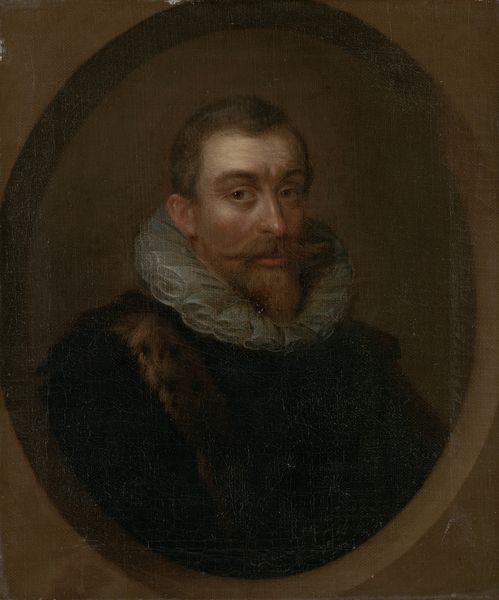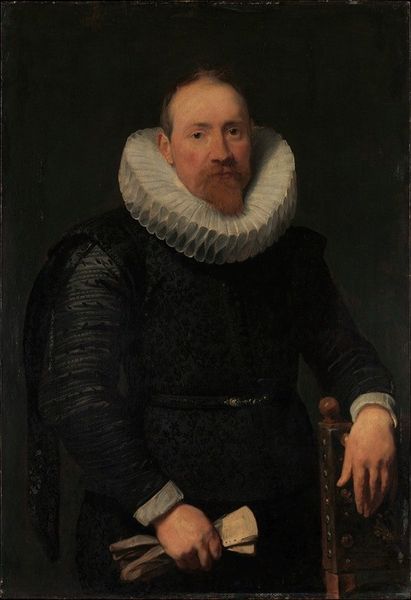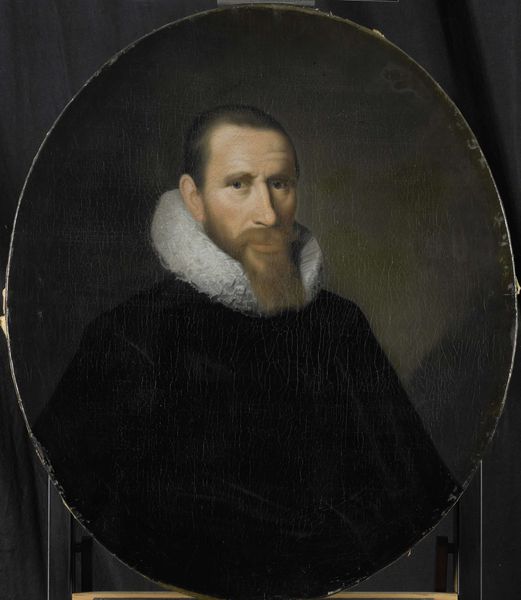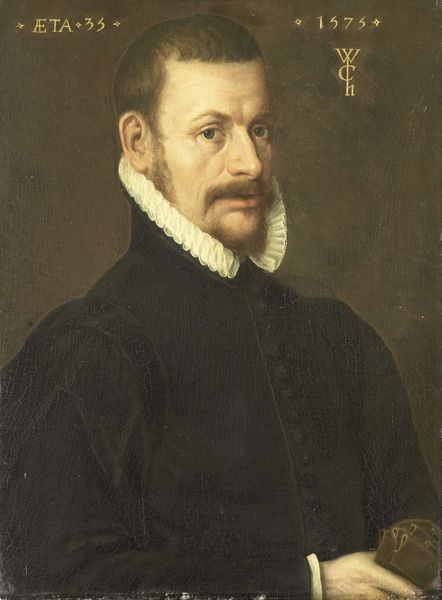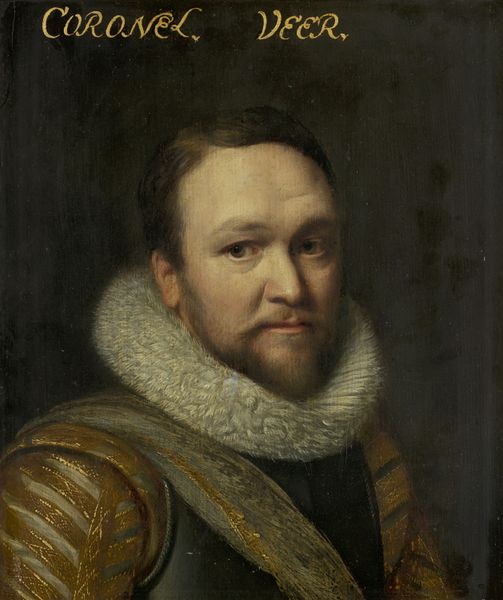
oil-paint
#
portrait
#
baroque
#
head
#
oil-paint
#
figuration
#
portrait reference
#
portrait head and shoulder
#
animal portrait
#
animal drawing portrait
#
portrait drawing
#
facial portrait
#
academic-art
#
forehead
#
portrait art
#
fine art portrait
#
celebrity portrait
#
digital portrait
Copyright: Public domain
Curator: This portrait, simply titled "Portrait of a Man," is attributed to Maarten de Vos, though its exact date remains unknown. Painted in oil, the work exemplifies the style and the figure drawing common in Academic Art. Editor: Immediately, I’m struck by the man’s gaze. It's so direct, almost confrontational, yet his expression is unreadable. It draws you in, makes you want to understand the story behind those eyes. Curator: Let’s consider the material aspects. Oil paint allows for such smooth blending and layering. De Vos’ technique gives a subtle luminosity to the face. This suggests meticulous attention to the sitter, indicative of a formal commission. What status, or role, might someone like this have held in the community? Editor: That immaculate ruff collar speaks volumes! It’s not just decoration, it's a statement. The collar was fashionable for the elites of this time and can be seen in relationship to societal hierarchies that dictated one's rank, profession and even their worldview. But the muted color palette keeps it from feeling too ostentatious. Is that balance intentional, perhaps reflecting a changing social dynamic? Curator: Absolutely. The artist uses those colours to create different textural surfaces. He carefully built up those fabrics using an impasto method with subtle gradations on the subject's skin to create an impactful sense of reality. That's a crucial element. It signifies wealth but also an emphasis on self-presentation as a function of power and position. Editor: Exactly. How does this emphasis connect with the societal function of portraiture during that era? Whose voices are traditionally erased by depictions of men like this? And how can acknowledging this context enable broader perspectives of privilege? Curator: It's that negotiation between technique, commission, and cultural moment that gives portraits like this such lasting importance for art historians. The way the paint is applied and crafted and refined becomes key to this study, beyond a simple representation. Editor: This is a call to really understand history from different viewpoints by observing paintings that might look unremarkable initially. Curator: I find the blending of physical object and a depiction so skillfully portrayed that continues to yield layers upon layers of potential insight is very impressive. Editor: For me, seeing how such works still pose ethical and sociopolitical questions confirms art history as vital and deeply engaged practice.
Comments
No comments
Be the first to comment and join the conversation on the ultimate creative platform.
